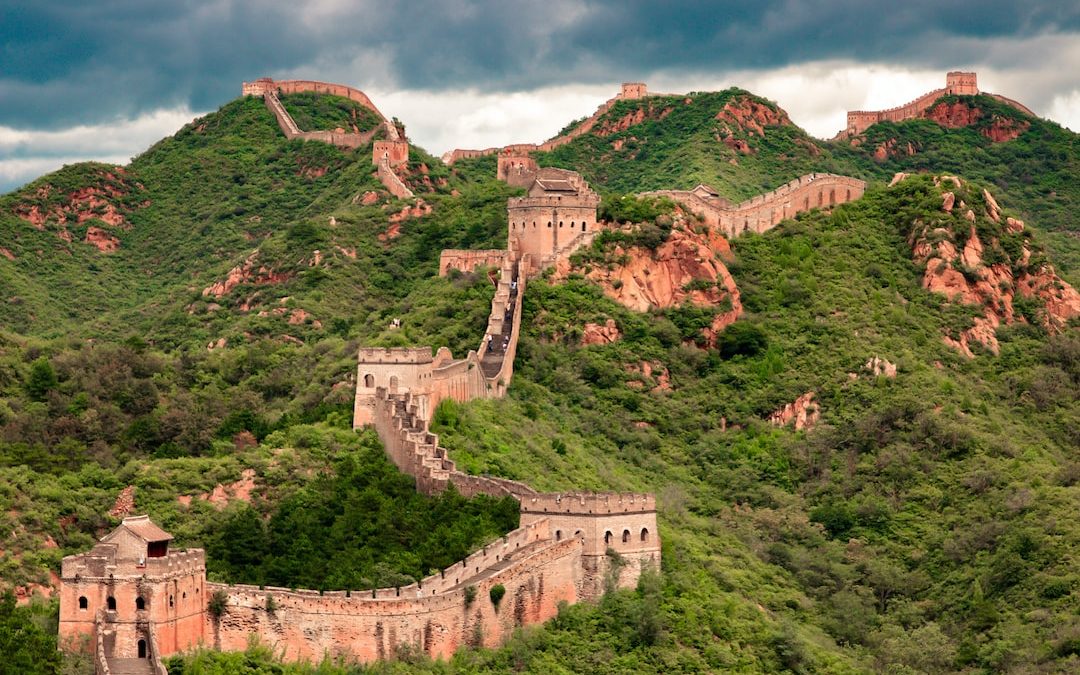Table of Contents
The Great Wall of China: A World Heritage Site
Introduction
The Great Wall of China is an iconic symbol of Chinese culture and history. It is one of the world’s most famous landmarks and an incredible feat of engineering. It stands as a testament to the ingenuity of the Chinese people and their determination to protect their empire. The Great Wall of China is a UNESCO World Heritage Site and has been designated as a symbol of China’s cultural, political, and historical importance. In this blog post, we will explore the history and significance of the Great Wall of China.
The History of the Great Wall of China
The Great Wall of China was built over a period of centuries to protect the Chinese Empire from attacks by foreign invaders. The most famous sections of the wall were built during the Ming Dynasty (1368-1644). During this time, the wall was expanded and reinforced, and it eventually stretched over 5,500 miles. Many of the walls that were built during the Ming Dynasty are still standing today.
The Great Wall of China was an incredibly ambitious project. It was constructed from a variety of materials including earth, stone, brick, and wood. It was built in sections over the course of centuries and included watchtowers, forts, and other defensive features. The wall was also equipped with beacon towers which were used to transmit messages over long distances.
The Great Wall of China is an impressive feat of engineering and a symbol of Chinese ingenuity. It stands as a reminder of the power and determination of the Chinese people to protect their empire.
Why was the Great Wall of China Built?
The Great Wall of China was built to protect the Chinese Empire from attacks by foreign invaders. It was constructed to keep out enemies such as the Mongols and the Manchus. The wall was also used to defend against raids by nomadic tribes from the north. The wall was designed to be difficult to breach and to provide an early warning system to alert the Chinese Empire in the event of an attack.
The Great Wall of China was also used to control movement of people and goods. The wall was used to regulate trade and to prevent the spread of disease. It was also used to impose taxes on goods passing through the wall.
The Cultural Significance of the Great Wall of China
The Great Wall of China has long been a symbol of Chinese culture and history. It has been featured in many Chinese films, books, and poems. It is seen as a symbol of strength and resilience and has become a national icon.
The Great Wall of China is also an important part of Chinese mythology. Legends tell of ghosts and monsters that lurk in the shadows of the wall. It is also said that the Great Wall of China was built by the mythical figure Yan Wang.
The Great Wall of China has had a profound effect on Chinese culture and has been a source of inspiration for centuries. It stands as a reminder of the power of the Chinese people and their commitment to protecting their empire.
The Great Wall of China Today
Today, the Great Wall of China is a popular tourist destination. It is one of the most visited sites in the world and is a symbol of Chinese culture and history. It is estimated that around 10 million people visit the Great Wall of China each year.
The Great Wall of China has been extensively renovated in recent years and many sections of the wall have been restored. The wall is also a popular spot for outdoor activities such as hiking. Tourists can also visit the many watchtowers and fortifications that line the wall.
The Great Wall of China and UNESCO
The Great Wall of China was declared a UNESCO World Heritage Site in 1987. It was designated as a symbol of China’s cultural, political, and historical importance.
The Great Wall of China is a testament to the ingenuity of the Chinese people and their determination to protect their empire. It is an incredible feat of engineering and a symbol of Chinese culture and history.
The Environmental Impact of the Great Wall of China
The Great Wall of China has had an impact on the environment. The wall has caused erosion, deforestation, and loss of biodiversity. The wall has also had an impact on the climate in the region.
In recent years, there has been an effort to reduce the environmental impact of the Great Wall of China. The government has implemented measures to reduce pollution and to protect the environment. There has also been an effort to preserve the cultural and historical significance of the wall.
Conservation Efforts
The Chinese government has taken steps to preserve the Great Wall of China. The government has implemented a number of conservation measures to protect the wall from damage and decay. These measures include the restoration of damaged sections of the wall, the construction of visitor centers, and the regulation of tourist activities.
The Chinese government has also implemented measures to protect the environment in the area. These measures include the promotion of eco-tourism and the protection of local wildlife.
The Great Wall Marathon
The Great Wall Marathon is an annual event that takes place on the Great Wall of China. The marathon is a grueling 42-kilometer run that starts at Jinshanling and ends at Simatai. The marathon attracts runners from all over the world and is a unique and challenging experience.
The Great Wall Marathon is a unique event that has become a popular tourist attraction. It is a testament to the strength and determination of the runners who take part in the event.
The Great Wall of China in Popular Culture
The Great Wall of China has been featured in many films, books, and television shows. It is a popular tourist destination and has been visited by many famous people including President Obama and Queen Elizabeth II. The Great Wall of China has become an iconic symbol of Chinese culture and history.
The Great Wall of China has also been featured in many video games. It has been featured in games such as Age of Empires, Assassin’s Creed, and Red Alert. The Great Wall of China is also featured in the popular game Minecraft.
Conclusion
The Great Wall of China is an iconic symbol of Chinese culture and history. It is one of the world’s most famous landmarks and an incredible feat of engineering. It stands as a testament to the ingenuity of the Chinese people and their determination to protect their empire. The Great Wall of China is a UNESCO World Heritage Site and has been designated as a symbol of China’s cultural, political, and historical importance. It is a popular tourist destination and a reminder of the power and resilience of the Chinese people.












